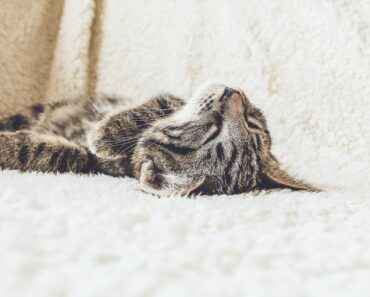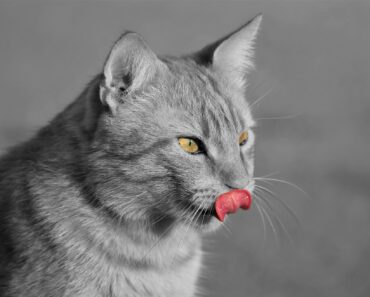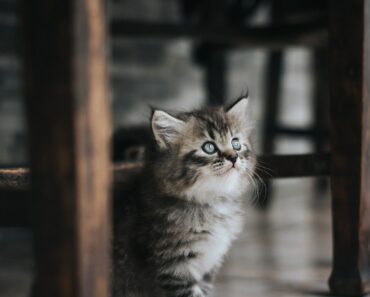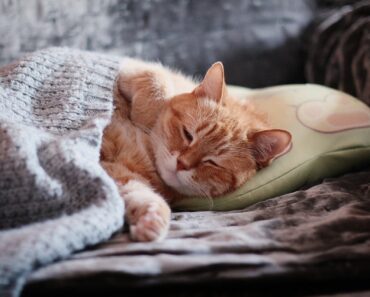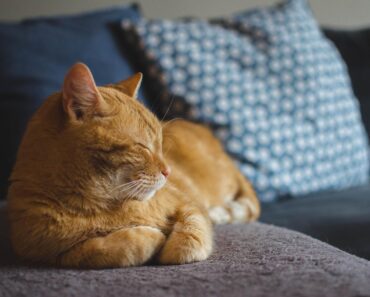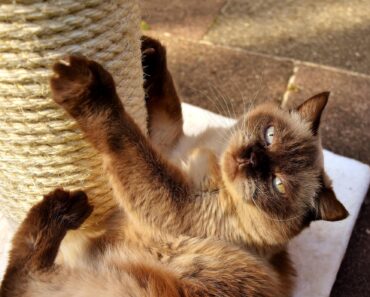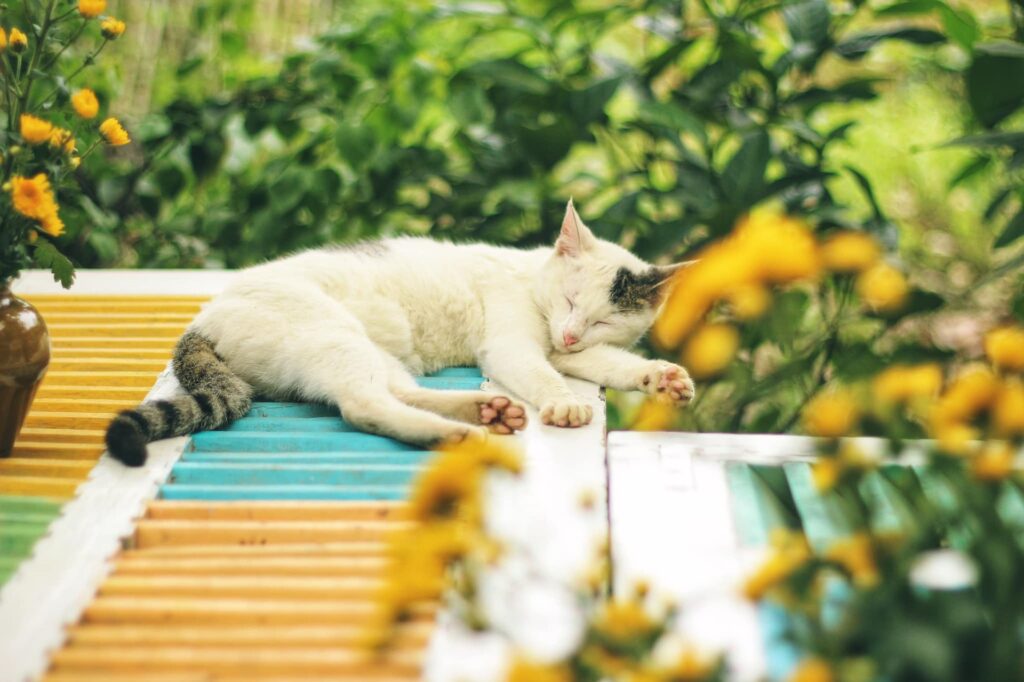
Cats love to dig in the ground. This passion stems from natural instincts and is sometimes outdated. This forces the owner to think seriously about how to wean the cat from shitting in the flowerpot and eating the flowers.
Isolating the plants is only a temporary solution and does not eradicate the cause. In most cases, the unwanted behavior can be eliminated with proper education and a few simple tips.
Why a cat attacks houseplants
All pets, regardless of age, crave plants, regardless of gender. If a cat attacks your favorite flowers, don’t scold it and find out what’s wrong.
An urge to eat the flower
Eating the leaves and stems of houseplants indicates a vitamin deficiency. Outdoor pets do not have this problem all the time. Pets don’t have this opportunity and therefore often lack folic acid, calcium, potassium, phosphorus and sodium.
In the case of severe avitaminosis, the whiskered animal begins to eat not only vegetables but also soil. This can lead to diarrhea, vomiting and severe poisoning.
Also remember that all green leafy vegetables are enriched with fiber. This essential element is necessary for comfortable digestion and artificial induction of vomiting. In addition to trichobezoars (hairballs), the animal may be bothered by gastrointestinal disorders and infections.
Interest in digging the ground
Cats love to dig in the ground and often spoil their summer cottage plots during the warmer months. Cats with a sedentary lifestyle that are often left alone at home show particular interest. Because of the lack of toys, they play as much as they can.
The holes that appear are quickly filled by the body of a happy coat. He feels warm and safe in the hole because he is well aware of his surroundings. Similar associations are evoked by the common box, which is very popular with all members of the feline family.
The digging instinct of domestic cats is transferred to the soil in which indoor flowers are grown. Many pets are curious to simply dig in the soil – a kind of feline hobby.
Perceiving the pot as a litter box
If a pet pees in its litter box, the problem is the breeding, the litter box or a disease. This behavior may be due to:
- infrequent cleaning of the litter box;
- unpleasant smell;
- The kitten is too young (it is nursing and not yet clean);
- an inappropriate location (too noisy and open) or ;
- insufficient number of litter boxes ;
- genito-urinary or intestinal disease;
- helminthiasis.
During painful urination, the animal associates the litter box with an unpleasant sensation, so it tries to urinate throughout the house. If you notice this behavior, be sure to contact the veterinarian.
Psychological traits or problems
Cats may chew leaves to get their owner’s attention or to relieve stress. If a cat is receiving too little attention or has recently been moved, this behavior is normal. Try to be there to restore affection and a sense of security.
Pay special attention to young children. They often interfere with the cat’s privacy when it is playing. If the cat is constantly being pulled by the tail or sprayed with water in the toilet, it will seek out quieter, safer places. Rules for pets should be established in childhood.
Poor nutrition is not always due to a lack of nutrients. Sometimes it is due to picaresis, a psychological disorder resulting from mental distress and nervous shock. Ingestion of inedible objects can kill the cat, so discuss the situation with a veterinarian.
Picking up an animal in the street is the most common complaint. In these cases, the distress is due to long periods of starvation and fear.
Is a cat’s interest in potted plants dangerous?
Your mustachioed pet should be discouraged from eating flowers as soon as possible. Failure to do so can result in acute poisoning with :
- severe dehydration of the body;
- damage to mucous membranes;
- general weakness, convulsions and coma.
These symptoms are characteristic of toxic plants and can be fatal. When choosing indoor flowers, be sure to check their compatibility with the feline family.
Methods of solving problems
When the cat approaches the pots, say “yuck” or “not that” by spraying water with a sprayer. This method is very effective, but time consuming. Cats are less trainable than dogs. It is much easier to eliminate the cause of their increased love of plants or to be crafty.
Repellent with an unpleasant smell
Cats have a very sensitive sense of smell and are therefore well repelled by pungent odors. Protect floor surfaces, leaves or pots with:
- table vinegar ;
- essential oils of clove, citrus or menthol;
- ethyl alcohol;
- citrus peel;
- any type of pepper.
Renew the smell as soon as it is gone. In addition to the above, you can use special sprays available at pet stores.
Sharp or noisy objects
Frequent digging of the ground can be avoided by using protective nets and grids. In addition, decorate the ground with shells or stones. This will make it more difficult for the flower to spoil.
Cats are afraid of loud, sticky objects, so cover the area with double-sided tape, aluminum foil or cling film. Once they’ve been caught a few times, they quickly lose interest.
For larger plants, any sound object will do. Decorate your indoor tree with rattles and jars of buttons or grits. Each encroachment will be accompanied by a loud rattle and a quick escape from the intruder.
Some owners recommend the use of toothpicks. While effective, they detract from the appearance of the flower pots and can injure the animal.
Replace plants with catnip
Never pull up the grass near your house. While logical and cheap, such a decision can lead to serious poisoning. Cities often struggle with rats, so particles of poison are deposited on the ground. If you bring this grass home, you risk killing your pet.
It’s safer to buy sprouted oats from pet stores or to grow the grain seeds yourself at home. Remember that outdoor soil can contain helminth eggs, bacteria and fungi. Therefore, it is recommended to use only ready-to-use substrate or special soil from the pet store.
Keeping the pots out of reach
If the pots are placed on a windowsill, they may block the cat’s view of the street and prevent it from sunbathing. In this case, simply move them elsewhere.
Once you’ve confirmed your cat’s love of stems and leaves in practice, you can try hanging the planters on the wall. Separate the flowerbed with a clear divider to prevent whiskers from encroaching.
Change the pet’s diet or introduce vitamins
If a disease or vitamin deficiency is detected, the diet will need to be adjusted. If your pet is fed dry food, try a better quality alternative.
If you prefer to use natural foods, consult your veterinarian about vitamin and mineral supplements. The problem should go away on its own once these products are incorporated into the normal diet.
Remember that physical punishments are unnecessary. They will only provoke aggression and make the situation worse. It can also lead to psychological problems.
The only safe way is love and attention. Become familiar with your pet’s habits and learn to recognize changes in behavior. If he changes in a way that defies logical explanation, take him to your veterinarian. In some cases, only a doctor can resolve the situation.

